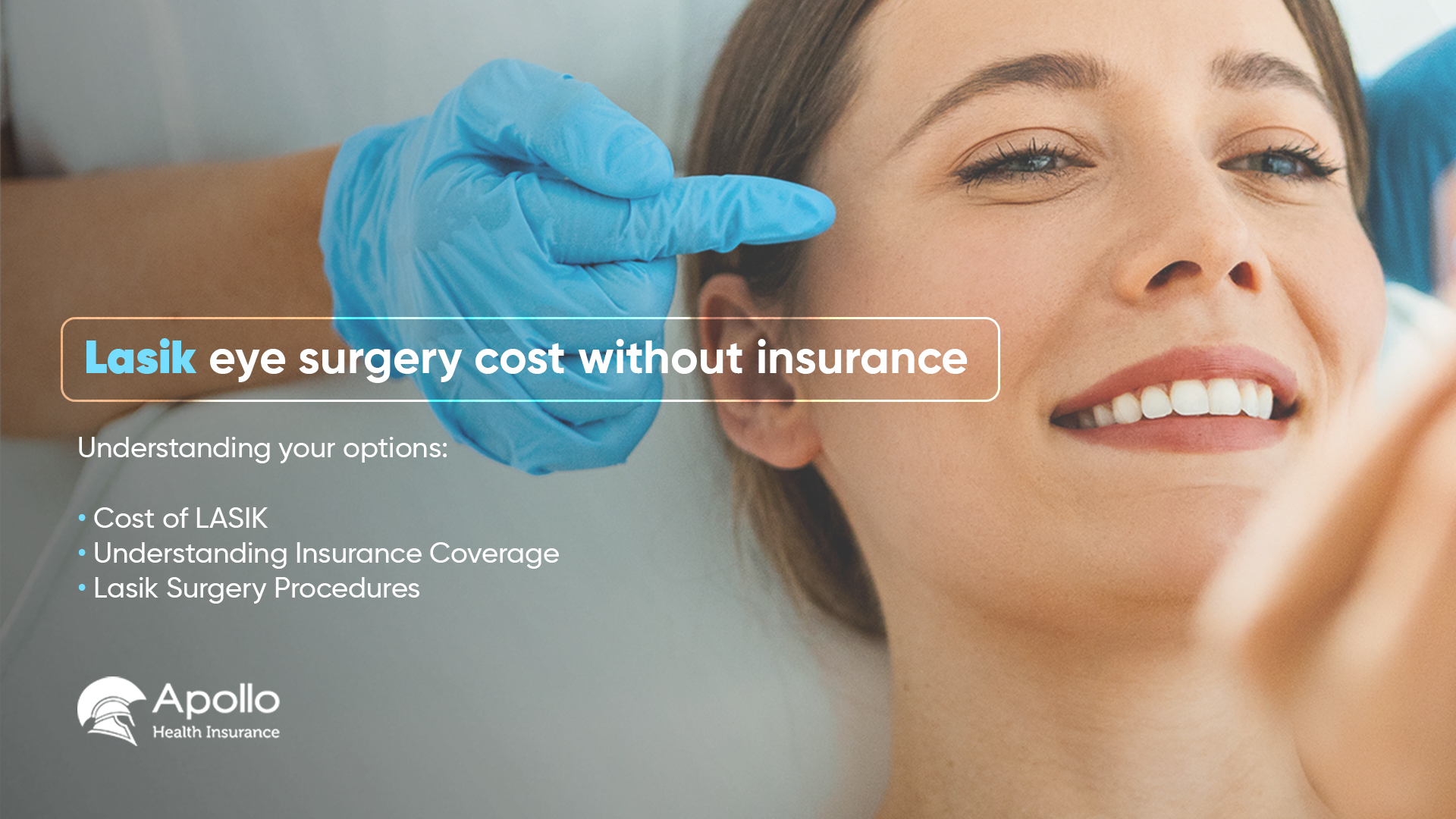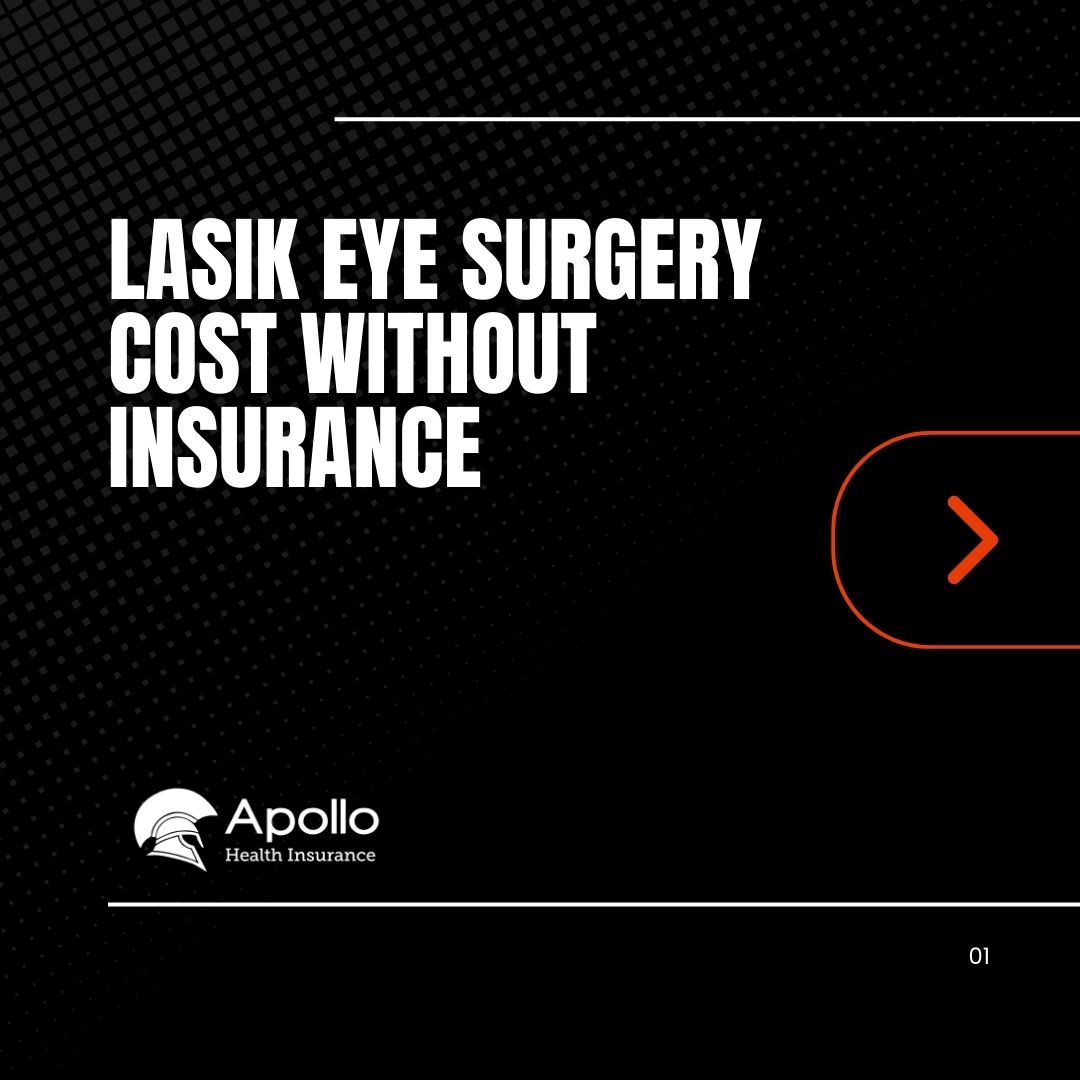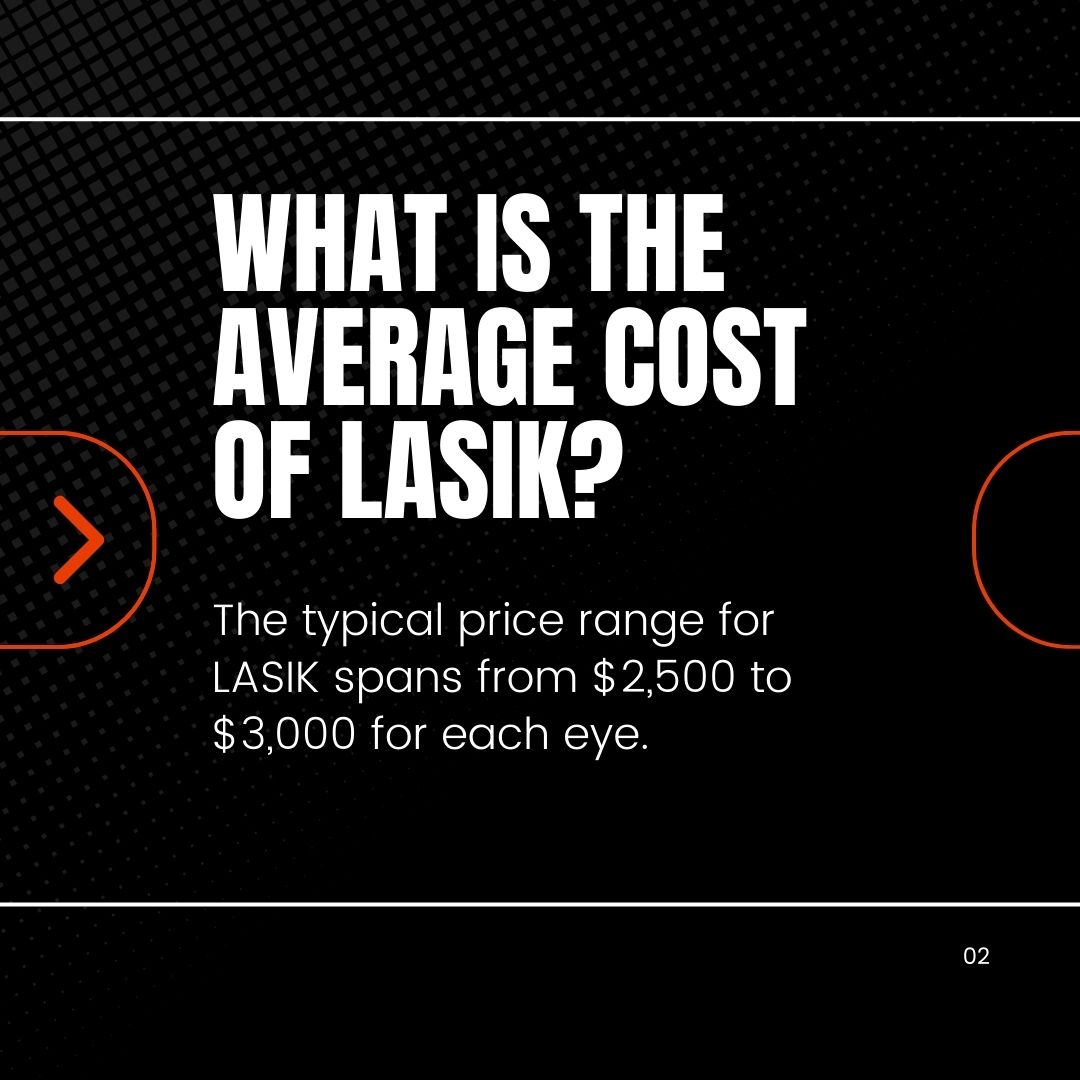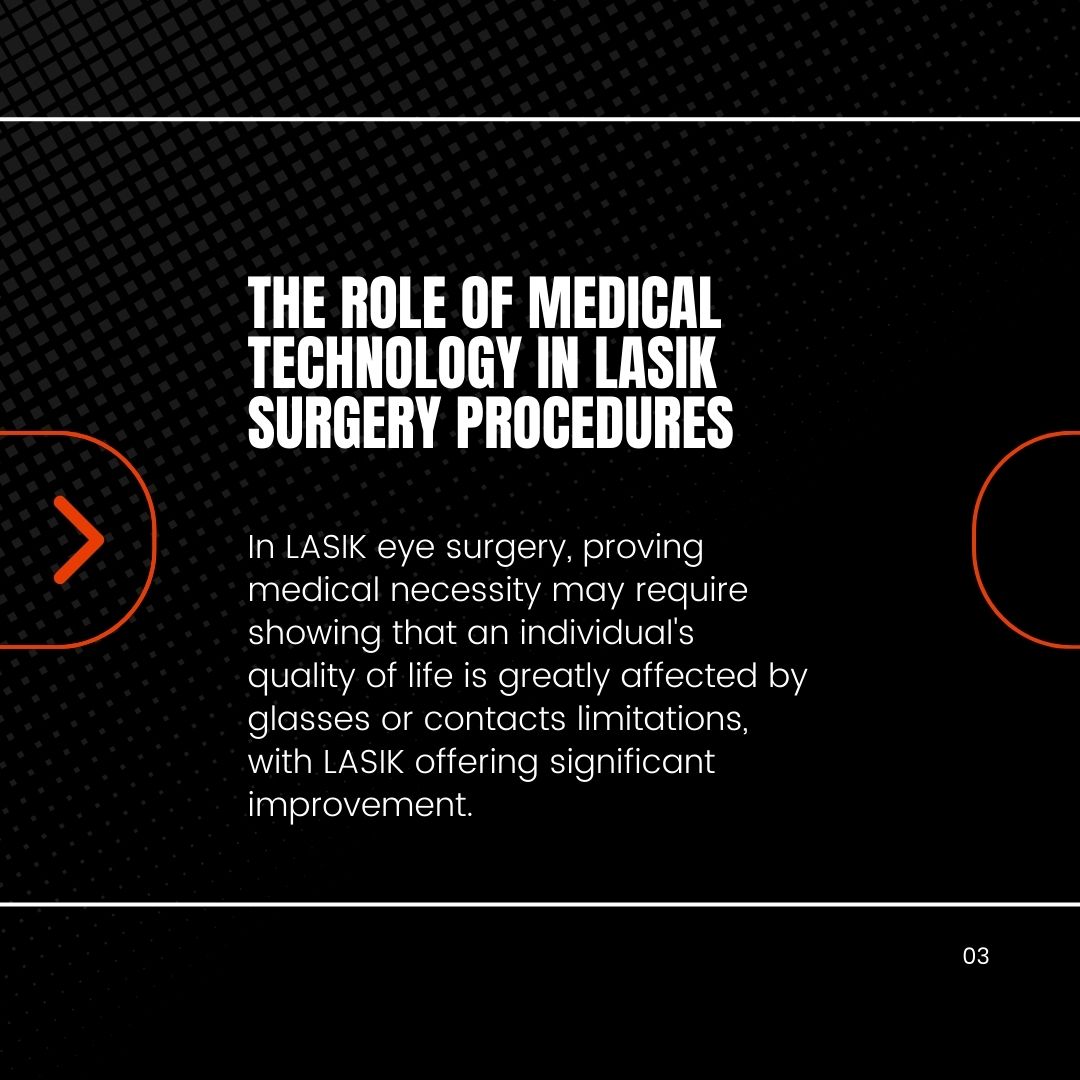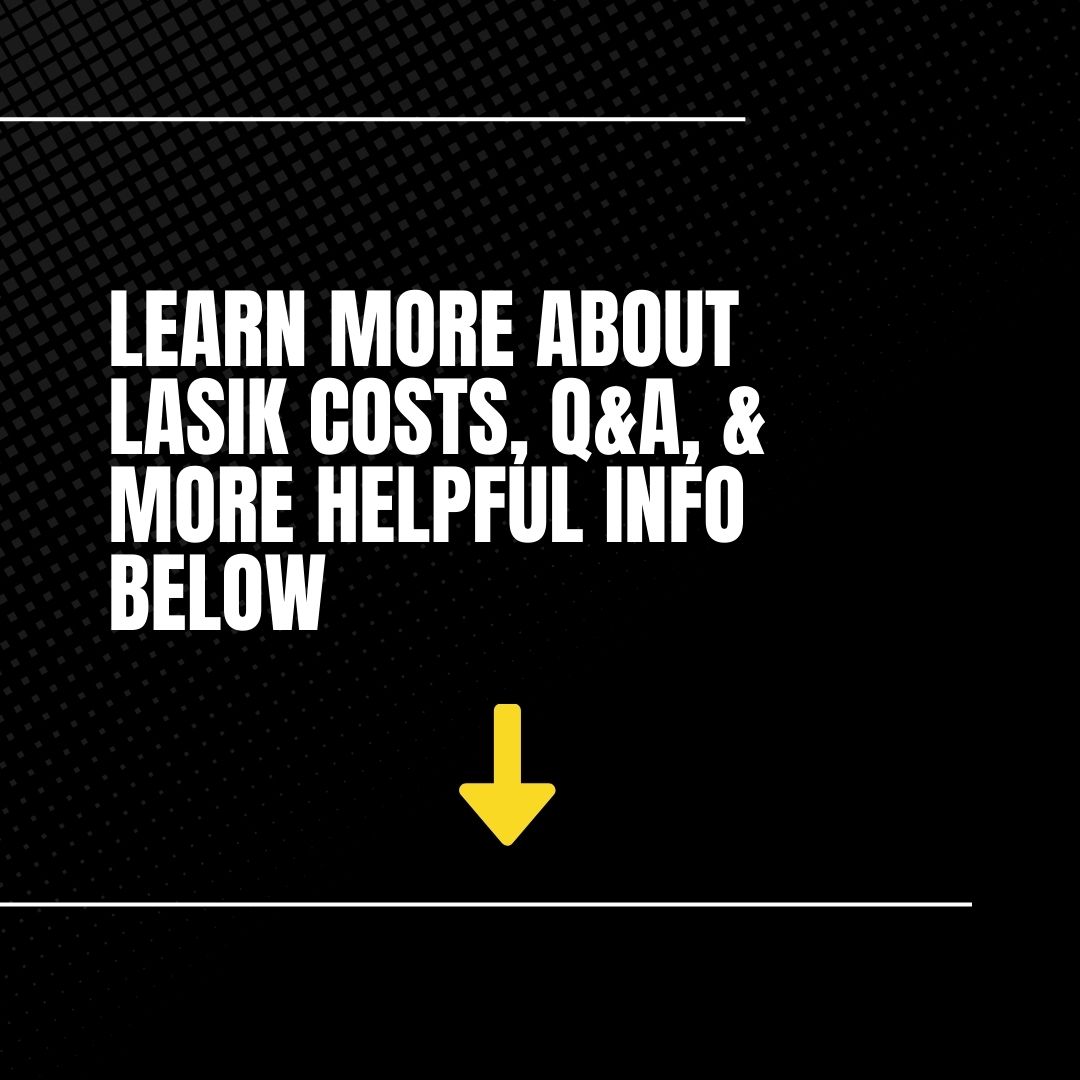Quick Links:
The typical price range for LASIK spans from $2,500 to $3,000 for each eye.
This price range is subject to fluctuation based on a variety of determinants, such as the advanced nature of the clinic’s technological apparatus, the refractive surgeon’s depth of experience and proficiency, along with other pertinent factors.
However, there are some options to save money like seasonal promotions, discounts, and finance options.
Let’s explore everything you need to know to undergo LASIK eye surgery and LASIC surgery cost to assist you in making informed decisions about your vision correction options.
So… what are your options for Lasik eye surgery without insurance?
Well… Typically, LASIK is considered an elective or non-medically necessary procedure and thus, is generally not covered by vision insurance, particularly in the market for those under 65 years of age. Coverage may vary for individuals with Medicare, indicating potential exceptions in different insurance markets.
In the realm of vision correction, LASIK eye surgery stands out as a beacon of hope for those tired of glasses and contact lenses. However, the financial aspect of LASIK, particularly in terms of insurance coverage, often brings a cloud of confusion.
This comprehensive guide aims to clear the mist, delving deep into the facets of insurance coverage for LASIK, exploring cost-saving avenues, and examining alternative financing options.
What is the Average Cost of LASIK?
When considering LASIK surgery costs, one of the first questions that come to mind is likely concerning its cost. The average cost of LASIK eye surgery typically ranges between $2,000 to $3,000 per eye in the United States, making it a significant consideration for many.
It’s important to note that this price encompasses a multitude of services including pre-surgery care, the surgical procedure itself, and the necessary post-operative follow-ups.
Factors that can influence the total cost include the technology used during the procedure, the experience level of the surgeon, and the geographical location of the clinic.
Due to the bespoke nature of LASIK surgery, aiming to cater specifically to the individual’s visual needs, prices can vary significantly.
With the average cost of LASIK being a crucial factor, it is always advisable to discuss all potential costs upfront with the chosen provider to avoid any unexpected expenses.
Understanding Insurance Coverage for Specific LASIK Procedures
The coverage of LASIK surgery costs by health insurance is a nuanced topic. Most standard health insurance policies classify LASIK as an elective or cosmetic procedure, thus excluding it from coverage. The reason behind this classification lies in the perception that LASIK is not medically necessary, given that vision correction alternatives like glasses and contact lenses exist.
However, this perspective doesn’t consider the lifestyle limitations and ongoing costs associated with these alternatives.
Despite the general stance, there are exceptions. If an individual cannot wear glasses or contacts due to specific medical conditions or if these traditional methods do not adequately correct vision, some insurance policies may cover LASIK under the banner of medical necessity.
It’s paramount for patients to engage in thorough discussions with their healthcare providers and insurance representatives to explore any potential for coverage under their policy’s definition of medical necessity.
Exploring the Lasik eye surgery cost without insurance illuminates the financial commitment required from those opting for the procedure without the backing of insurance coverage. Given the significant expense associated with LASIK, ranging from $2,500 to $3,000 per eye, the lack of insurance coverage underscores the necessity for individuals to plan their finances meticulously.
This scenario pushes prospective patients to consider either saving up for the procedure, investigating payment plans offered by eye care centers, or exploring alternative financing options. Thus, understanding the full scope of LASIK eye surgery costs without insurance becomes crucial for anyone considering this life-changing procedure.

The Role of Medical Technology in Lasik Surgery Procedures
Medical necessity can sometimes turn the tide in favor of LASIK coverage, including LASIK eye surgery. This term typically refers to procedures or treatments deemed crucial for diagnosing or treating an illness, injury, condition, disease, or its symptoms.
In the context of LASIK eye surgery, proving medical necessity might involve demonstrating that an individual’s quality of life is significantly impaired by the limitations of glasses or contact lenses and that LASIK could provide a substantial improvement.
Documenting the medical necessity for LASIK, including the LASIK surgery procedure, requires meticulous preparation. Patients should gather comprehensive documentation, including medical records, vision prescriptions history, and detailed letters from healthcare providers.
These documents should collectively argue the case for LASIK as a necessary procedure for the patient’s visual health and overall well-being.
The LASIK surgery procedure represents a significant advancement in vision correction technology, promising a potential end to the reliance on glasses and contact lenses for those who qualify.
While navigating the complexities of health insurance coverage for LASIK can be daunting, understanding the nuances of medical necessity and exploring all available financial planning options are crucial steps for anyone considering this life-changing surgery.
By fully grasping the LASIK costs, procedure, and insurance intricacies, individuals can make informed decisions that best suit their vision needs and financial situations.
Is LASIK Covered for Astigmatism or Other Conditions?
When it comes to specific conditions like astigmatism, the waters of insurance coverage become slightly murkier.
Astigmatism, characterized by an irregular curvature of the eye’s lens or cornea, can lead to blurred vision at all distances. While LASIK can effectively correct astigmatism, securing insurance coverage for the procedure hinges on the policy’s specifics.
Patients with astigmatism or other conditions corrected by LASIK should scrutinize their insurance policies for any clauses that might hint at coverage possibilities.
Engaging directly with insurance companies to discuss one’s specific condition and the potential for LASIK to offer a necessary correction can also provide clarity.

Vision Service Plan (VSP) Option for LASIK
For those with access to a Vision Service Plan (VSP), there’s a glimmer of hope in the quest for affordable LASIK. VSP, among other vision insurance plans, often doesn’t cover the full cost of LASIK.
However, they frequently offer significant discounts on the procedure through partnerships with LASIK centers and surgeons.
These discounts can vary but often range from 15% to 20% off the standard price or a fixed reduced rate for VSP members. To maximize these benefits, patients should ensure their chosen LASIK provider participates in the VSP network and inquire directly about the specific discounts available.
Is LASIK Covered by an FSA or HSA?
Flexible Spending Accounts (FSAs) and Health Savings Accounts (HSAs) emerge as valuable allies for individuals considering LASIK. Both FSAs and HSAs allow individuals to allocate pre-tax dollars towards eligible healthcare expenses, including LASIK surgery.
This pre-tax advantage means that patients can effectively reduce the net cost of the procedure, making it more financially accessible.
To leverage an FSA or HSA for LASIK, patients should first confirm the eligibility of the expense with their account administrator. Planning is also crucial, as FSAs typically operate on a use-it-or-lose-it basis within the plan year, while HSAs offer more flexibility with funds rolling over year to year.
Exploring Ways to Save on LASIK Costs: Insurance and Beyond
While navigating the labyrinth of LASIC eye surgery costs, patients shouldn’t overlook other avenues for cost savings. Discounts, promotions, and financing plans offered directly by LASIK centers and surgeons can make a significant difference in the overall expense.
Seasonal Promotions and Discounts
Many LASIK providers run seasonal promotions or discounts, especially during holidays or the end of the fiscal year.
Keeping an eye on local LASIK centers’ advertisements or subscribing to their newsletters can alert patients to potential savings opportunities.
Group or Corporate Discounts
Some employers partner with LASIK providers to offer corporate discounts to their employees. Additionally, membership in certain organizations or clubs might also unlock group discounts. It’s worth investigating whether any affiliations could offer a financial edge in your LASIK journey.
Financing Options
Recognizing that the upfront cost of LASIK can be daunting, many providers offer financing plans. These plans often feature low-interest rates or interest-free periods, allowing patients to spread the cost over manageable monthly payments.
Thoroughly explore and compare the terms of these financing options to find the best fit for your financial situation.

The Cost of LASIK: How Much Can You Expect to Pay?
The price tag on LASIK can fluctuate widely based on several factors, including the surgeon’s expertise, the technology employed, and geographical location.
On average, the cost ranges from $2,000 to $3,000 per eye. While this might seem steep, it’s essential to weigh this one-time expense against the ongoing costs of glasses, contacts, and related accessories over a lifetime.
What Insurance is Best for LASIK?
Selecting insurance with potential LASIK benefits requires careful consideration. Plans that include VSP or similar vision benefits stand out as preferable options.
Moreover, policies compatible with FSAs or HSAs offer a strategic way to manage LASIK expenses through pre-tax savings.
Consulting with Your Eye Care Provider: A Crucial Step
Before making any decisions regarding LASIK, consulting with a qualified eye care provider is essential.
This initial consultation will not only help determine if you are a suitable candidate for LASIK but also enable you to understand the risks and benefits associated with the procedure.
During this meeting, your provider will perform a thorough eye examination to assess your vision needs and discuss any specific concerns related to your eye health.
It’s important to come to this consultation prepared with a list of questions you may have about LASIK, its effectiveness for your particular condition, and any potential complications.
Understanding the procedure’s success rates, as well as any post-surgery care you may require, is crucial for making an informed decision. Remember, the goal of this consultation is not just to assess your eligibility for LASIK but also to ensure that it aligns with your vision health goals and lifestyle.
The Role of Technology in LASIK Surgery
Advancements in technology have significantly improved the safety, accuracy, and outcomes of LASIK surgery. Modern LASIK procedures utilize state-of-the-art equipment such as the excimer laser for reshaping the cornea and wavefront technology for creating a precise map of the eye. These technological innovations allow for customized treatments that are tailored to the unique curvature and imperfections of each patient’s eyes.
When exploring LASIK options, inquire about the types of technology utilized by potential providers. Surgeons who employ advanced technologies may offer a higher likelihood of achieving optimal results.
It’s also beneficial to research and understand the differences between traditional LASIK and newer techniques like bladeless LASIK, which uses a laser rather than a mechanical cutting tool to create the corneal flap. The choice of technology can impact both the procedure’s outcome and LASIK eye surgery cost.

Unveiling the LASIK Magic: Everything You Need to Know
LASIK, short for Laser-Assisted In Situ Keratomileusis, offers hope for those looking to correct vision problems like nearsightedness, farsightedness, and astigmatism. This surgery, leveraging a specialized laser to reshape the cornea—the eye’s clear front part—improves how light is focused on the retina and enhances visual clarity.
The LASIK procedure begins with creating a thin “flap” in the cornea, either with a laser or a blade. This flap is then folded back, allowing the surgeon to perform the LASIK procedure by reshaping the cornea with an excimer laser, tailored to the patient’s specific vision needs. Once the cornea has been precisely reshaped during the LASIK procedure, the flap is placed back to heal naturally, without stitches.
The whole LASIK process is quick, taking less than 30 minutes for both eyes, and is performed under local anesthetic eye drops. Post-surgery, patients enjoy a quick recovery thanks to the efficiency of the LASIK procedure, with most seeing improvement almost immediately, and vision stabilizing in a few weeks. LASIK can significantly reduce or eliminate the need for glasses or contacts, thereby improving the quality of life.
What Is The Lasic Procedure? (Infographic)
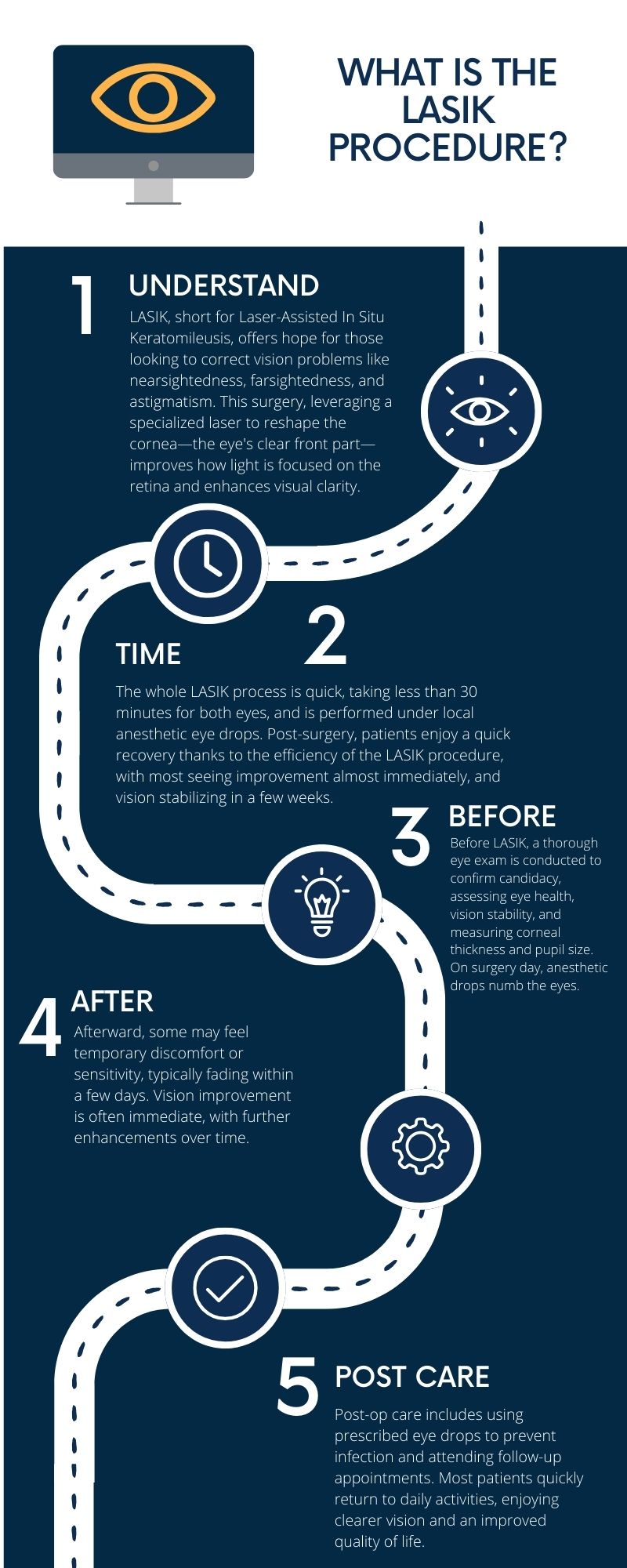
What happens when you undergo LASIC eye surgery?
Before LASIK, a thorough eye exam is conducted to confirm candidacy, assessing eye health, vision stability, and measuring corneal thickness and pupil size. On surgery day, anesthetic drops numb the eyes.
The surgeon then creates and lifts the corneal flap to reshape the cornea underneath. The laser treatment itself is swift, just a few minutes per eye.
Afterward, some may feel temporary discomfort or sensitivity, typically fading within a few days. Vision improvement is often immediate, with further enhancements over time.
Post-op care includes using prescribed eye drops to prevent infection and attending follow-up appointments. Most patients quickly return to daily activities, enjoying clearer vision and an improved quality of life.
So, when you undergo LASIC eye surgery, make sure you’re prepared.
Interest-Free Payment Plans from LASIK Clinics
In addition to utilizing HSAs, FSAs, and other savings strategies to manage the cost of LASIK eye surgery cost, many clinics offer their own financing options that can significantly reduce the upfront financial burden.
Notably, some clinics provide interest-free payment plans, allowing patients to distribute the LASIK surgery cost over six to twelve months without accruing interest. This approach makes LASIK more accessible to those without immediate funds. However, it’s important to carefully review the payment plan terms to ensure they fit your financial situation and avoid future strain.

Post-LASIK Care and Recovery
Understanding the recovery process and necessary post-LASIK care is crucial for ensuring a smooth and successful healing period.
Most patients notice an immediate improvement in their vision following the procedure, but it may take several weeks for vision to stabilize fully. Your eye care provider will schedule follow-up appointments to monitor your recovery and address any concerns.
Immediately after the surgery, it’s common to experience mild discomfort, sensitivity to light, or a sensation of having something in your eye.
These symptoms are typically short-lived and can be managed with the medications and protective eyewear provided by your surgeon and eye doctor. Adhering to your eye doctor’s post-operative instructions, including avoiding certain activities that could strain or harm your eyes during the recovery phase, is essential for achieving the best possible outcome.
By taking these steps and considerations into account, patients can better prepare for LASIK surgery and its associated costs, benefits, and recovery process.
Armed with the right information and support from a trusted eye care professional, individuals seeking LASIK can make decisions that positively impact their vision and overall quality of life.
How Much Can You Save on LASIK with an FSA?
Utilizing an FSA for LASIK can lead to substantial savings, primarily because the funds contributed to an FSA are pre-tax. Depending on your tax bracket, this could translate to savings of 20% to 30% on the cost of the procedure.
Planning and coordination with your LASIK provider and FSA administrator are key to maximizing these savings.
How to Maximize Savings with a Health Savings Account (HSA)
Just like FSAs, Health Savings Accounts (HSA) can be a powerful tool in making LASIK surgery more affordable. HSAs have the added advantage of not being subject to the “use-it-or-lose-it” rule, unlike FSAs.
This feature allows for more strategic long-term planning, as funds in an HSA roll over year to year and can accumulate interest over time.
To ensure you’re making the most of your HSA for LASIK, consider the following tips:
Contribute the Maximum Allowed Amount: By maximizing your annual HSA contributions, you can increase the pre-tax dollars available for your LASIK surgery.
The IRS sets annual contribution limits, so check the latest figures to plan your contributions effectively.
Plan Your Procedure Timing: If your HSA funds are not sufficient to cover the full cost of LASIK in the current year, consider saving for an additional year.
This approach can help you avoid out-of-pocket expenses and leverage the tax advantages of your HSA to the fullest extent.
Check HSA Eligibility Requirements: While HSAs typically cover LASIK, it’s always wise to verify with your HSA provider or employer about the specific eligibility requirements and any necessary documentation.
Save Your Receipts: For tax purposes and potential HSA reimbursement, retain all receipts and documentation related to your LASIK surgery. This paperwork will be crucial for verifying your eligible expenses and ensuring compliance with IRS regulations.
By effectively utilizing an HSA, patients can transform the financial landscape of undergoing LASIK surgery, making it a more accessible and financially savvy option.

Conclusion
While the initial outlook on insurance coverage for LASIK may seem bleak, a deeper exploration reveals a landscape filled with potential savings and financing strategies. From leveraging FSAs and HSAs to tapping into VSP discounts and financing plans, the path to affordable LASIK is paved with informed choices and proactive planning. By thoroughly researching and utilizing the resources at your disposal, achieving clear vision through LASIK can become a financially attainable goal.
In exploring options to manage the cost of LASIK surgery, it’s also worth considering assistance from vision insurance providers like Apollo Health Insurance. Apollo offers free consultations to help you understand if and how your plan can contribute towards LASIK expenses. Their team of experts can guide you through the coverage details, including any deductibles or copays, and assist in identifying additional savings opportunities that may be available. This invaluable service ensures that you are fully informed about your insurance benefits and how they can be optimized to reduce the financial burden of LASIK surgery, making the prospect of enhanced vision more accessible.

Frequently Asked Questions about LASIK Eye Surgery
Q: Is everyone a candidate for LASIK surgery?
Not everyone is suitable for LASIK surgery. Candidates must be over 18 years old, have stable vision for at least a year, and have a vision prescription within certain limits. Certain health conditions and eye diseases may disqualify you. A thorough eye exam by a LASIK surgeon can determine your eligibility.
Q: How long does the LASIK procedure take?
The actual laser treatment time is usually less than a minute per eye. However, you should plan to spend around 90 minutes at the clinic for pre-surgery preparation and post-surgery instructions.
Q: Are there any risks associated with LASIK surgery?
As with any surgery, there are risks involved with LASIK. These can include dry eyes, temporary vision disturbances, and in rare cases, loss of vision. Most side effects are mild and temporary. Discussing potential risks and benefits with your surgeon is important.
Q: How quickly can I return to normal activities after LASIK?
Many patients are able to return to most of their normal activities the next day. However, it’s advised to avoid strenuous activities, especially those that could result in an eye injury, for at least a week. Your surgeon will provide you with a detailed post-op care plan.
Q: Will I still need glasses or contacts after LASIK surgery?
Most people experience significant improvements and may not need glasses or contacts for most activities. However, some may require them for certain tasks like reading or driving at night. It’s also possible that you may need reading glasses as you age due to presbyopia.
Q: How do I choose a LASIK surgeon?
Look for a surgeon with extensive experience in performing LASIK surgery, positive reviews from previous patients, and a willingness to answer your questions and discuss potential risks. Ensuring the clinic uses the latest technology is also crucial for the best outcome.
Can LASIK surgery be redone if needed?
Yes, in some cases, a touch-up procedure, called an enhancement, can be performed to further refine vision. However, this depends on individual factors, including corneal thickness. Your surgeon can provide you with more information based on your specific situation.
Is LASIK covered by insurance?
Most insurance plans consider LASIK an elective procedure and do not cover it. However, using pre-tax dollars from FSAs or HSAs can effectively reduce the cost. Some insurance plans may offer discounts on LASIK through specific programs or partnerships, so it’s worth checking with your provider.
I am a professional content writer specializing in the health insurance field. My work primarily focuses on simplifying the complexities of healthcare coverage, aiming to provide clarity and insight into an often confusing subject. Empowering people to make informed decisions about their well-being is my passion. At Apollo Health Insurance, we share that commitment. Apollo Health Insurance stands at the forefront of securing the best healthcare coverage for individuals, ensuring affordability without compromising on quality.


